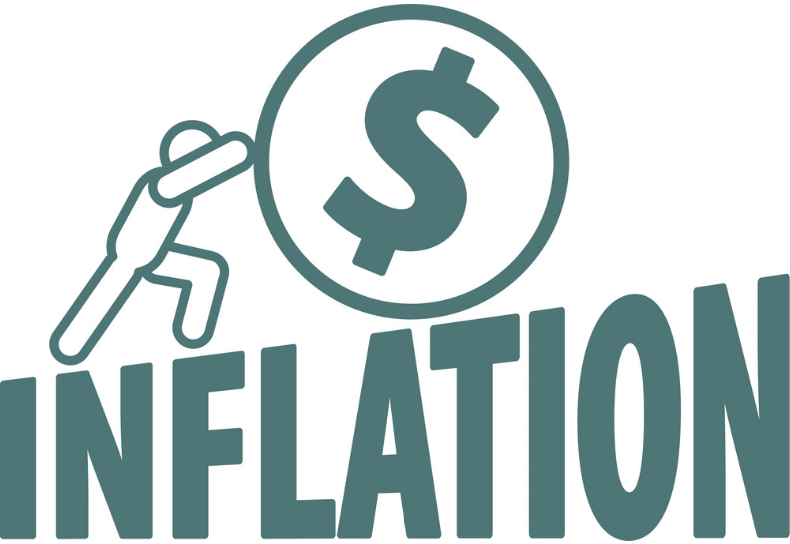Income and the price of products are vastly different to what they are today.
Mars Bars in the UK cost 29p in 2000, though cost 60p today.
The median annual earnings for full-time employees in the UK was approximately £30,000 in 2019, while in 2000 employees took around £19,000[1].
This is largely due to inflation. Currency is simply worth less than what it was years ago.
The Foreign Exchange Market
Trading in foreign exchange (FX or Forex) reached $6.6 trillion per day in April 2019, up from $5.1 trillion three years earlier, according to the 2019 Triennial Survey of turnover in OTC FX markets[2]. With a daily turnover in excess of $6 trillion, the FX market has no equal in the world of international finance.
Average daily trading volume for US government treasury trading, according to SIMFA (Securities Industry and Financial Markets Associations), is approximately $600 billion. 2018 recorded $547.8 billion, with an increase of 8.4% in 2019 to $593.6 billion[3].
The average daily trading volume on the New York Stock Exchange (NYSE), the largest stock market in the world, fluctuates between 2 and 6 billion shares. The latest daily trading volume, according to The Wall Street Journal, is $1,506,569,251 for the primary market[4].
What is Inflation?
According to the US Federal Reserve:
Inflation is the increase in the prices of goods and services over time. Inflation cannot be measured by an increase in the cost of one product or service, or even several products or services. Rather, inflation is a general increase in the overall price level of the goods and services in the economy. Federal Reserve policymakers evaluate changes in inflation by monitoring several different price indexes. The Federal Open Market Committee (FOMC) judges that an annual increase in inflation of 2 percent in the price index for personal consumption expenditures (PCE), produced by the Department of Commerce, is most consistent over the longer run with the Federal Reserve’s mandate for maximum employment and price stability. The FOMC uses the PCE price index largely because it covers a wide range of household spending. However, the Fed closely tracks other inflation measures as well, including the consumer price indexes and producer price indexes issued by the Department of Labour[5].
Inflation is considered by many as too much money chasing too few goods.
What this means is if there’s too much currency in the economy then the money’s worth is diluted.
Consumer price inflation is the release that generally frequents newswires, taking a weighted average of typical household products.
What Causes Inflation?
The two major types of inflation in the economy are cost-push inflation and demand-pull inflation.
Cost-Push Inflation may arise due to the overall increase in the cost of production.
Cost of production could rise as a result of an increase in the prices of raw materials and wages.
Demand Pull Inflation is a rise in demand relative to supply.
Some economists attribute this rise in demand to money supply. If the supply of money in an economy exceeds available goods and services, demand pull inflation exists.
The Effect of Inflation on FX Markets
Foreign exchange rates and inflation share a connection, influencing one another.
High inflation can prompt central banks to increase interest rates in attempt to slow the economy down. An increase in interest rates may also spark interest in the respective country’s bond market, consequently increasing the need for that country’s currency. If demand for the currency is extensive, a rally would take place.
Low inflation, however, encourages central banks to lower interest rates in a bid to resuscitate the economy, fundamentally making money cheap to promote spending and investment. Investors, in this case, may find returns are no longer satisfactory. This can lead to investors moving funds to a country offering a more lucrative return, placing downward pressure on the weaker country’s currency.
A weak US dollar, for example, also helps exports. As the currency drops, the cost to foreign consumers falls which usually results in purchasing more products. This generates higher profits, production, employment and output. Increased output can lead to inflationary pressures. A stronger dollar can, of course, have the opposite effect.
With respect to central banks, say the US Federal Reserve, a hawkish stance implies the central bank wants to guard against excessive inflation, in support of the raising of interest rates. A dovish stance put forward by the central bank, on the other hand, generally favours economic growth and employment over tightening interest rates.
The accuracy, completeness and timeliness of the information contained on this site cannot be guaranteed. IC Markets does not warranty, guarantee or make any representations, or assume any liability regarding financial results based on the use of the information in the site.
News, views, opinions, recommendations and other information obtained from sources outside of www.icmarkets.com.au, used in this site are believed to be reliable, but we cannot guarantee their accuracy or completeness. All such information is subject to change at any time without notice. IC Markets assumes no responsibility for the content of any linked site.
The fact that such links may exist does not indicate approval or endorsement of any material contained on any linked site. IC Markets is not liable for any harm caused by the transmission, through accessing the services or information on this site, of a computer virus, or other computer code or programming device that might be used to access, delete, damage, disable, disrupt or otherwise impede in any manner, the operation of the site or of any user’s software, hardware, data or property.
[1] https://www.statista.com/statistics/1002964/average-full-time-annual-earnings-in-the-uk/
[2] https://www.bis.org/statistics/rpfx19_fx.pdf
[3] https://www.sifma.org/resources/research/us-bond-market-trading-volume/



